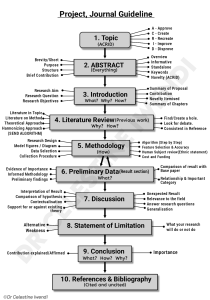In academic and technical research—particularly in domains like Wireless Sensor Networks, Artificial Intelligence, and Internet of Things—the quality of a literature review can determine whether a manuscript gets published, revised, or rejected.
Yet, too often, literature reviews are reduced to mere lists of citations without clear purpose or analytical depth.
To address this, we introduce a powerful enhancement: the SEND Algorithm—a structured methodology for crafting literature reviews that are clear, compelling, and aligned with global publishing standards.
🔎 What is the SEND Algorithm?
The SEND Algorithm is a strategic framework designed to guide researchers in evaluating existing literature through four key lenses:
- Similarity – Identify works most aligned with your topic.
- Exceptional – Highlight standout contributions in the field.
- Novelty – Emphasise what is truly new in your work.
- Differences – Clarify where and how your research diverges.
This approach not only strengthens the rationale behind your research but also enhances the criticality and originality of your literature review.
🧭 Backed by a Globally-Used Framework
SEND is embedded within the renowned Project, Journal Guideline created by Dr. Celestine Iwendi, which has been downloaded over half a million times globally.
In particular, the Literature Review stage (Step 4) integrates the SEND Algorithm as a means of harmonising methodological, theoretical, and topical literature—making it easier to define research gaps and justify novelty.
The Figure below shows: The Project, Journal Guideline, featuring the SEND Algorithm for Literature Review
💡 Key Benefits of SEND for Researchers
Whether you’re preparing a journal article, conference paper, or thesis, SEND helps to:
✔️ Map the intellectual landscape
✔️ Identify meaningful gaps in current knowledge
✔️ Avoid redundancy in references and methodology
✔️ Clarify your unique contribution to the field
✔️ Connect the literature logically to your research problem
🎯 Who Should Use SEND?
The SEND Algorithm is ideal for:
- Master’s students refining their dissertation structure
- PhD candidates building theoretical frameworks
- Postdoctoral researchers and faculty preparing manuscripts for high-impact journals
- Supervisors and reviewers assessing the rigour of student submissions
In the context of WSN, AI, and IoT, SEND is particularly effective for navigating complex multi-disciplinary literature where methodological overlap is common and novelty must be precisely articulated.
🧠 Final Thoughts
In today’s fast-paced academic publishing environment, it’s no longer enough to cite relevant papers—you must position your research and justify its contribution. The SEND Algorithm provides a systematic path to do just that.
“If your literature review doesn’t tell a story, it’s time to SEND.”
– Professor Celestine Iwendi
📩 Interested in Applying SEND?
Stay tuned for upcoming tutorials and webinars where we explore how SEND is being applied in current doctoral research and technical paper development—especially in WSN, XR, AI, and digital health.
🧵 Related Reading:
- The ACRID Method for Topic Selection
- Ethical Framing in IoT Research
- Structuring High-Impact Abstracts for Engineering Journals
📥 Download the Framework: 
📧 Contact Author: celestine.iwendi@ieee.org
🖋️ This article is part of the Research Writing Series by WSN Magazine.